ANIMALS
25 Mythical And Misunderstood Animals
Published
5 months agoon
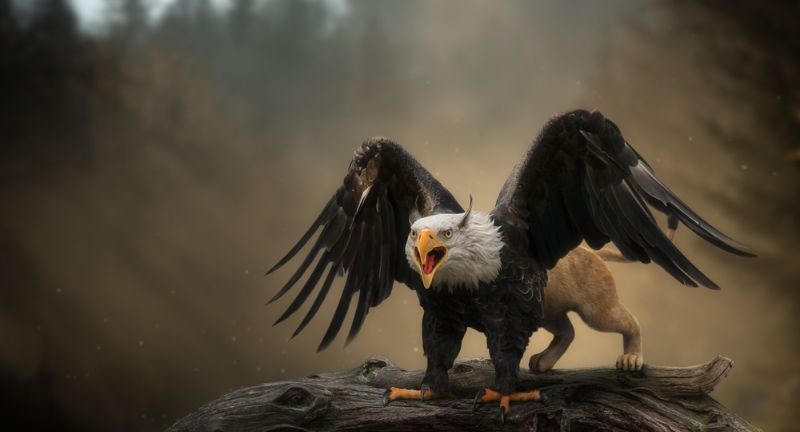
Shutterstock
Throughout history, both mythical creatures and real animals have captured human imagination, often blending fantasy and reality in fascinating ways. Legendary beasts like the Kraken and Phoenix have long been revered, feared, and even worshiped in various cultures, symbolizing mystery and power. At the same time, real animals such as wolves, bats, and sharks have been misunderstood, often painted as villains in stories and folklore. These animals and myths reveal as much about human culture and psychology as they do about nature itself. In this exploration, we dive into the captivating tales and hidden truths behind some of the world’s most intriguing mythical and misunderstood creatures.
Kraken

Shutterstock
The Kraken is a legendary sea monster often depicted as an enormous squid or octopus. Tales of the Kraken originated in Scandinavian folklore, where sailors claimed it would drag entire ships into the depths. The creature symbolizes the unknown dangers lurking in the ocean, embodying the fear of the deep sea. Its legend persists in modern pop culture, representing the power and mystery of the ocean.
Phoenix

Shutterstock
The Phoenix is a mythical bird known for its ability to burst into flames and be reborn from its ashes. Representing immortality and renewal, the Phoenix has appeared in various cultures from ancient Egypt to Greece. It’s often depicted as a beautiful bird with bright red and gold feathers, symbolizing life’s cyclical nature. The Phoenix’s story inspires resilience, reminding us that rebirth is possible even after great challenges.
Griffin

Shutterstock
The Griffin, a creature with the body of a lion and the head and wings of an eagle, symbolizes strength and guardianship. Known for protecting treasures and sacred sites, Griffins are legendary creatures in both European and Middle Eastern mythology. Its lion body represents courage and power, while its eagle head and wings denote vision and wisdom. The Griffin is often seen as a fierce protector and a symbol of divine power.
Unicorn

Shutterstock
The Unicorn is a mythical creature with a single spiraling horn on its forehead, often associated with purity and grace. In various legends, its horn was believed to have healing powers and the ability to purify water. Unicorns appear in European folklore as symbols of innocence and are frequently depicted in medieval tapestries. Their elusive nature and mystical qualities continue to make them icons of fantasy and beauty.
Dragon

Shutterstock
Dragons are powerful, serpentine creatures found in the mythology of cultures around the world, often symbolizing strength and fear. In Western tales, dragons are usually fierce, fire-breathing beasts guarded by warriors or heroes. In Eastern cultures, however, they are revered as wise and benevolent protectors associated with water and good fortune. Their impressive form and association with power make dragons an enduring symbol in art and literature.
Basilisk

Shutterstock
The Basilisk, often referred to as the “king of serpents,” is a mythical creature believed to have a deadly gaze or breath. In medieval folklore, the Basilisk could kill any creature that met its eyes, and its venom was thought to be deadly. Legends say it could also turn its victims to stone with a glance, adding to its fearsome reputation. Known for its dangerous powers, the Basilisk became a symbol of death and pestilence in folklore.
Chupacabra

Shutterstock
The Chupacabra is a modern cryptid said to inhabit parts of the Americas, often associated with livestock attacks. Descriptions vary, but it’s commonly depicted as a reptilian or dog-like creature that drinks the blood of animals. The legend began in Puerto Rico and spread, creating a cultural fascination with this elusive creature. Although its existence remains unproven, the Chupacabra continues to capture the imagination as a symbol of mystery and the unknown.
Cerberus

Shutterstock
Cerberus is the three-headed dog of Greek mythology that guards the entrance to the Underworld. Known as a fearsome guardian, it ensures that no one can escape Hades. Each head is said to represent the past, present, and future, making Cerberus a symbol of life’s inescapable nature. The mythical creature has become an icon of loyalty, vigilance, and the boundaries between life and death.
Yeti

Shutterstock
The Yeti, also known as the “Abominable Snowman,” is an ape-like creature believed to inhabit the snowy Himalayas. Reported sightings and mysterious footprints have fueled stories of this elusive beast for centuries. Described as a massive, white-furred creature, the Yeti is both feared and respected by local cultures. Its legend has inspired numerous expeditions, capturing human curiosity about what might still be hidden in the world’s most remote regions.
Minotaur

Shutterstock
The Minotaur is a creature with the body of a man and the head of a bull, central to a famous Greek myth. Confined to a labyrinth, it was fed by sacrifices until defeated by the hero Theseus. The Minotaur represents the fusion of human and animal instincts, as well as themes of entrapment and sacrifice. It has come to symbolize the duality of human nature and the concept of overcoming inner monsters.
Mothman

Shutterstock
The Mothman is a cryptid with large wings and glowing red eyes, often associated with ominous events or disasters. First reported in Point Pleasant, West Virginia, Mothman sightings preceded a tragic bridge collapse, sparking stories of its connection to danger. The Mothman has since become a cultural icon, representing the human need to find explanations for unexplained occurrences. Its sightings continue to fuel interest in cryptozoology and urban legends.
Loch Ness Monster

Shutterstock
The Loch Ness Monster, or “Nessie,” is a legendary creature said to inhabit Scotland’s Loch Ness. Sightings describe it as a long-necked, aquatic creature, reminiscent of a plesiosaur. Nessie has become a beloved figure in cryptozoology, attracting countless visitors and investigations to Loch Ness. The mystery surrounding Nessie has made it an enduring symbol of the unknown and the possibility of hidden creatures in our natural world.
Wendigo

Shutterstock
The Wendigo is a monstrous, cannibalistic creature from Algonquian folklore, representing insatiable hunger and greed. Traditionally, it is said to be a person transformed by extreme desperation, often in winter’s harsh conditions. The Wendigo’s chilling appearance and hunger make it a warning against excess and loss of humanity. Its legend endures as a cautionary tale about the dangers of unchecked consumption and isolation.
Sphinx

Shutterstock
The Sphinx, with the body of a lion and the head of a human, is famous for posing riddles to travelers. In Greek mythology, it guarded the city of Thebes and posed a riddle only Oedipus could solve. The Sphinx symbolizes knowledge and mystery, standing as a gatekeeper to hidden truths. It remains a figure of fascination in art and culture, embodying both protection and challenge.
Mermaid

Shutterstock
Mermaids are mythical creatures with the upper body of a human and the lower body of a fish, known for their beauty and mystery. Legends depict them as both kind and deadly, with some stories describing mermaids rescuing sailors and others luring them to their doom. In various cultures, mermaids are linked to the sea’s allure and danger, symbolizing beauty intertwined with peril. Their enchanting image persists in folklore and modern media, symbolizing fascination with the unknown depths.
Sharks

Shutterstock
Sharks are often feared as dangerous predators, but they play an essential role in marine ecosystems. While widely portrayed as vicious in media, shark attacks on humans are actually quite rare. Sharks help maintain ocean health by preying on weaker fish, which keeps populations balanced. Despite their importance, many shark species face endangerment due to overfishing and environmental threats, making them both feared and vulnerable creatures.
Wolves

Shutterstock
Wolves are highly intelligent, social animals that play a crucial role in maintaining ecological balance. Historically, they have been feared as dangerous predators, especially in folklore that depicts them as symbols of menace. In reality, wolves live in close-knit family groups, where they display loyalty and cooperative behavior. Conservation efforts have worked to restore wolf populations in many regions, shedding light on their misunderstood nature and value to ecosystems.
Bats

Shutterstock
Bats are often associated with darkness and disease, but they are incredibly beneficial to ecosystems. As natural pest controllers, many bat species consume large numbers of insects, aiding agriculture and reducing the need for pesticides. Some species also play a vital role in pollinating plants, especially in tropical regions. While they are sometimes feared, bats are essential for biodiversity and are generally harmless to humans.
Hyenas

Shutterstock
Hyenas are often misunderstood as cowardly scavengers, partly due to their eerie vocalizations that sound like laughter. In reality, they are skilled hunters with complex social structures and remarkable intelligence. Spotted hyenas, for instance, are known to outcompete other predators for food, showcasing their adaptability and resilience. Despite their reputation, hyenas contribute to healthy ecosystems by keeping animal populations in check and cleaning up carcasses.
Owls

Shutterstock
Owls are often seen as omens in folklore, representing wisdom, mystery, or even death. With silent flight and nocturnal habits, these birds of prey have a haunting presence, but they are crucial for controlling rodent populations. Owls have highly specialized hearing and vision, allowing them to hunt effectively in low-light conditions. Their unique adaptations and cultural significance make them both revered and mysterious animals in human history.
Crows

Shutterstock
Crows are often associated with bad luck or death in folklore, yet they are among the most intelligent animals on the planet. Known for their problem-solving abilities and memory, crows can recognize human faces and even use tools. Their eerie appearance and vocalizations have made them subjects of superstition across cultures. However, they play vital roles in ecosystems by scavenging, which helps to keep environments clean.
Black Cats

Shutterstock
Black cats are often linked to superstition, particularly as symbols of bad luck or witches’ familiars. This stigma, originating in medieval Europe, persists today despite their status as simply another beautiful type of feline. In some cultures, black cats are seen as lucky or protective, especially in Japan and parts of Britain. These cats deserve to be appreciated for their uniqueness, not misunderstood based on old superstitions.
Snakes

Shutterstock
Snakes are often feared and symbolized as deceitful creatures in mythology and folklore. Yet, they are vital to ecosystems, controlling rodent populations and serving as prey for larger animals. While some snake species are venomous, most are harmless to humans and avoid contact if possible. Their role in the food web and unique adaptations make them fascinating and important creatures rather than figures of fear.
Spiders

Shutterstock
Spiders are frequently met with dread, but they are invaluable for pest control, helping to keep insect populations balanced. While some species are venomous, most are harmless and pose no real threat to humans. Spiders are skilled hunters with incredible adaptability, spinning webs to capture prey with efficiency. Despite their often-misunderstood nature, spiders contribute significantly to ecological health.
Vultures

Shutterstock
Vultures are seen as symbols of death and decay, but they play a vital ecological role by consuming carrion. This scavenging helps prevent the spread of disease and keeps ecosystems clean. Despite their appearance, vultures are highly efficient at locating food sources and can travel vast distances. Their role in the environment is crucial, though they are often unfairly associated with morbidity.
Conclusion

Shutterstock
From mythical creatures like dragons and mermaids to misunderstood animals like bats and vultures, these stories reveal a deep-rooted connection between humans and nature. Our fascination with the unknown and misunderstood often reflects our own fears, hopes, and values. By reexamining these creatures, we can appreciate the unique roles they play in ecosystems and in cultural storytelling. This exploration reminds us of the need to respect and protect both real and imagined beings. In doing so, we keep alive the legends and mysteries that enrich our world.
More Amazing Animals+
-
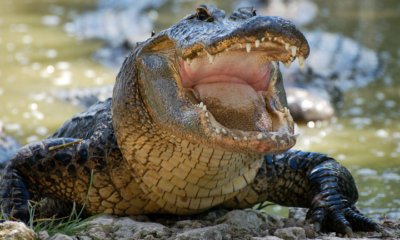

21 Deadliest Animals In North America
-


Chandler, Arizona Police Officer Helps Duck and Her Ducklings Cross…
-
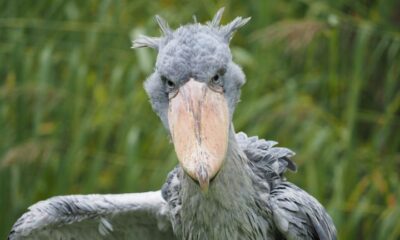

19 Bizarre Creatures That Seem Straight Out of a Dr.…
-


Triple otter on the rocks
-


27 Weird Animal Facts That You Didn’t Know
-


33 Things Dogs Can Do That Cats Can’t
-
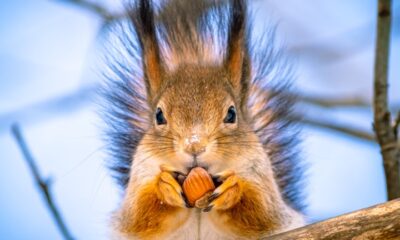

We Promise This Animal Is Not As Annoying As You…
-
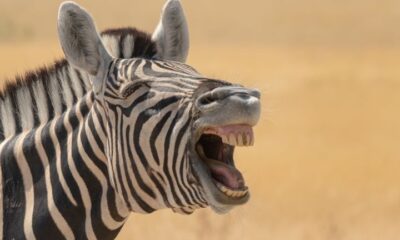

Beyond the Stripes: 25 Intriguing Zebra Facts That’ll Amaze You
-


Giant panda celebrates first birthday with special cake at zoo…
-
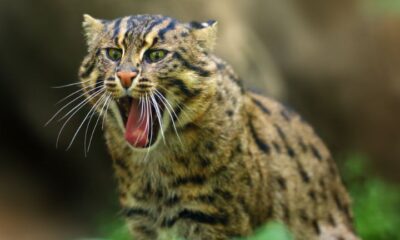

27 Animals With The Most Elaborate Hunting Strategies
-
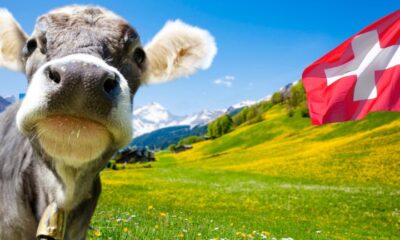

Udderly Adorable: 19 Cute Cow Breeds You’ll Love
-
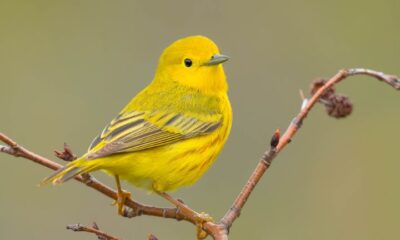

25 Birds That Migrate For Winter
